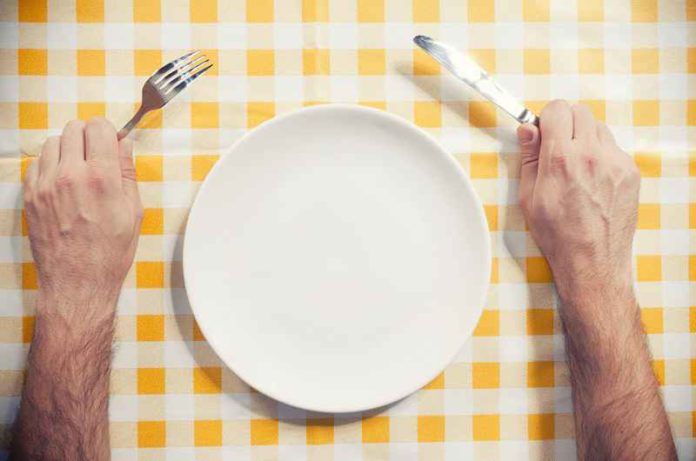A 2017 study investigated whether the addition of inulin and the plant protein wheat gluten enhance appetite suppression by rye porridge, and the effects of fibre breakdown on appetite, and insulin and glucagon-like-peptide-1 (GLP-1) levels. Though inulin and wheat gluten did not improve rye porridge’s appetite-suppressing effects, greater fibre breakdown and reductions in meal-induced increases in blood sugar after a second meal were observed with greater rye intake, without affecting insulin and GLP-1 levels.
Though the breakdown of fibre into short chain fatty acids, hydrogen, and methane is known to increase the feeling of satisfaction after a meal (satiety), its role and the size of its contribution to this effect are unknown. Similarly, how proteins reduce appetite is unclear, though secretion of glucagon-like peptide-1 (GLP-1) – a hormone which slows the emptying of the stomach and increases levels of insulin, the hormone which facilitates the absorption of blood sugar by cells – is thought to play a role. Understanding the appetite-suppressing effects of foods rich in fibre and protein may lead to improvements in strategies to curb rising rates of obesity.
In a 2017 Swedish study published in the British Journal of Nutrition, researchers investigated whether added protein and inulin – an indigestible fibre that rapidly breaks down inside the large intestine – could enhance the appetite-suppressing effects of fibre-rich rye porridge, and explored the effects of fibre breakdown on appetite and levels of insulin and GLP-1. Twenty-one healthy adults with normal eating habits, aged 18-60, entered the study between March and August 2013. To limit the impact of hormonal fluctuations on appetite, all women included in the study were either post-menopausal or regularly took hormonal contraceptives.
During clinical visits, conducted at intervals of 5 or more days, participants were fed 1 of 6 breakfasts in random order. Prior to consuming breakfasts, participants fasted for 12 hours and avoided alcohol, strenuous activity, and fibre-rich foods. At breakfast, participants were fed either 1 of 5 rye porridges – consisting of 55 g of rye flakes and 200 mL of water(RP55), or 40 g of rye flakes in 150 mL of water alone (RP40) or with a 15 mg mixture high in the plant protein wheat gluten (RPHG), high in inulin (RPHI), or with moderate levels of both (RPIG) – or whole bread (WB) for comparison. Lunch, consisting of pre-packaged sausage Stroganoff with rice, and dinner, consisting of pasta Bolognese, were served 4 and 8 hours after breakfast, respectively, with water. Participants were instructed to eat all the food provided at lunch and to eat until satisfied at dinner, finishing each in 30 minutes – uneaten food at dinner was weighed to determine energy intake.
Appetite, with regard to hunger, fullness, and the desire to eat, was rated from 0 to 100 by each participant, conducted 18 times during the day at 30 min intervals, starting 30 minutes before breakfast. Hydrogen and methane levels in the breath were measured after each appetite rating. Blood samples were collected 12 times per visit.
No differences in appetite were observed before breakfast. Hunger was roughly 16% lower throughout the day when subjects consumed RP55 compared breakfasts other than RPHG. Before lunch, hunger was about 20% lower with RP55 and RPHI, compared to WB. Fullness was 18% higher on average before dinner, 29% higher before lunch, and 25% higher 2 hours after breakfast with RP55 compared porridges other than RPHG. The desire to eat before lunch was 25% lower with RPHI than RP40, and 22% lower than with WB. Throughout the day, hydrogen levels were 3 times higher after RP55 consumption, compared to WB consumption. RPHI and RPIG were associated with hydrogen levels 46% higher than with RP55, and 102% higher than with RP40. For RPIG, levels were 43% higher than with RPHG, 48% higher than with RP55, and 105% higher than with RP40. Methane was higher throughout the day with RPHI, RP55, and RP40 consumption compared to RPHG and WB. Levels were 57% higher with RP55 than with WB. Blood sugar was higher with RP55 than with RPHI or RP40two hours after breakfast, and WB before lunch. RP55 was associated with 7% higher blood sugar levels than porridges other than RPIG. Between lunch and dinner, meal-induced increases in blood sugar were reduced with RPHI and RP55 more than with WB. Blood sugar was on average 6% lower with RP55 than with WB. Insulin and GLP-1 levels did not differ between breakfast meals. In the analysis, breath hydrogen before dinner was associated with higher fibre intake, and between lunch and dinner was associated with lower blood sugar.
The study found inulin and gluten insufficient to enhance appetite suppression by rye porridge. The findings suggest that increasing intake of whole grain rye increases the breakdown of fibre and reduces meal-induced increases in blood sugar after a second meal, though without affecting levels of insulin and GLP-1. As the replacement of 15 g of rye with 15 g of inulin and wheat gluten did not improve satiety, the larger 55 g portion size of RP55 compared to the 40 g size of the other rye porridges may have accounted for much of the decrease in appetite observed in this study, as evidenced by RP55’s strong associations with fullness and lack of hunger. As no differences in appetite were observed around dinnertime, the size of the pre-packaged lunch may have made up for lower levels of satiety after certain breakfasts. Further research will be required to elucidate the relationship between fibre breakdown, post-second meal blood sugar, appetite, and the mechanisms which govern them.
Written By: Raishard Haynes, MBS



